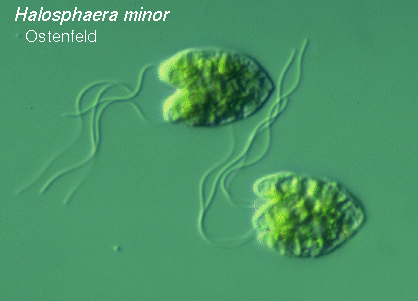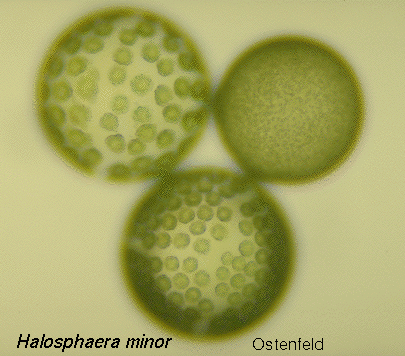
Two cell types are typical of Halosphaera species, a small planktonic flagellate and a large planktonic cyst, or phycoma.

| The flagellate cells are typically 20-30 micrometers long. The diagnostic shape is a four-lobed pyramid, but the cells are fragile and easily disrupted so this shape may be hard to observe. Four flagella emerge from a pit in the center of the pyramid base. A large chloroplast takes up most of the cell volume. |
 | Phycomata may be found in significant numbers at the surface of calm seas in winter. They are spherical and may be a millimeter or more in diameter. Unlike the motile cells, the phycomata have a thick cell wall, one layer of which contains sporopollenin. In some species the phycoma wall is unornamented, fine decorations ("punctae") are present in others. Fossil phycoma-like structures, termed "leiospheres", have been reported from rocks 1.5 billion years old. |
Return to summary information